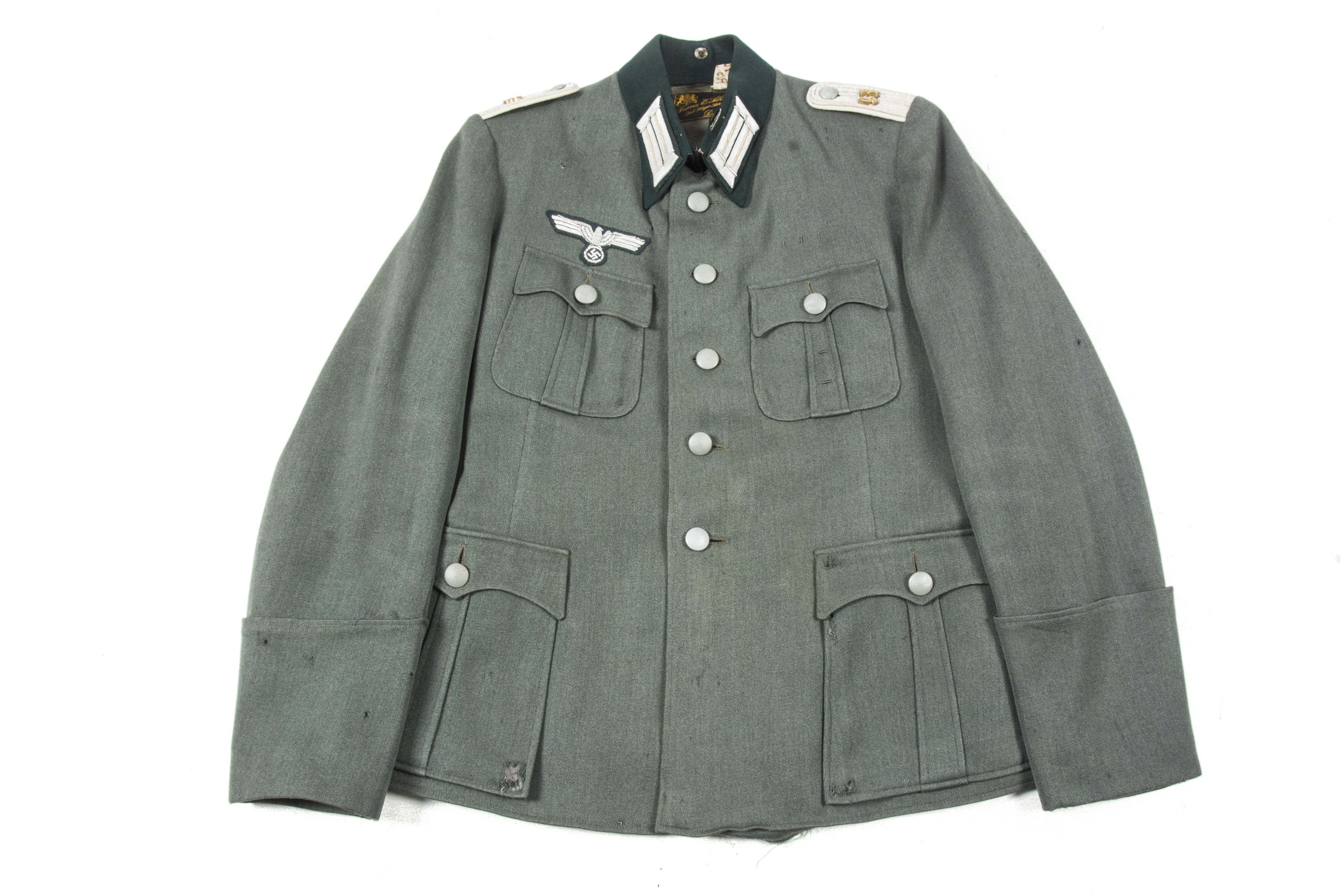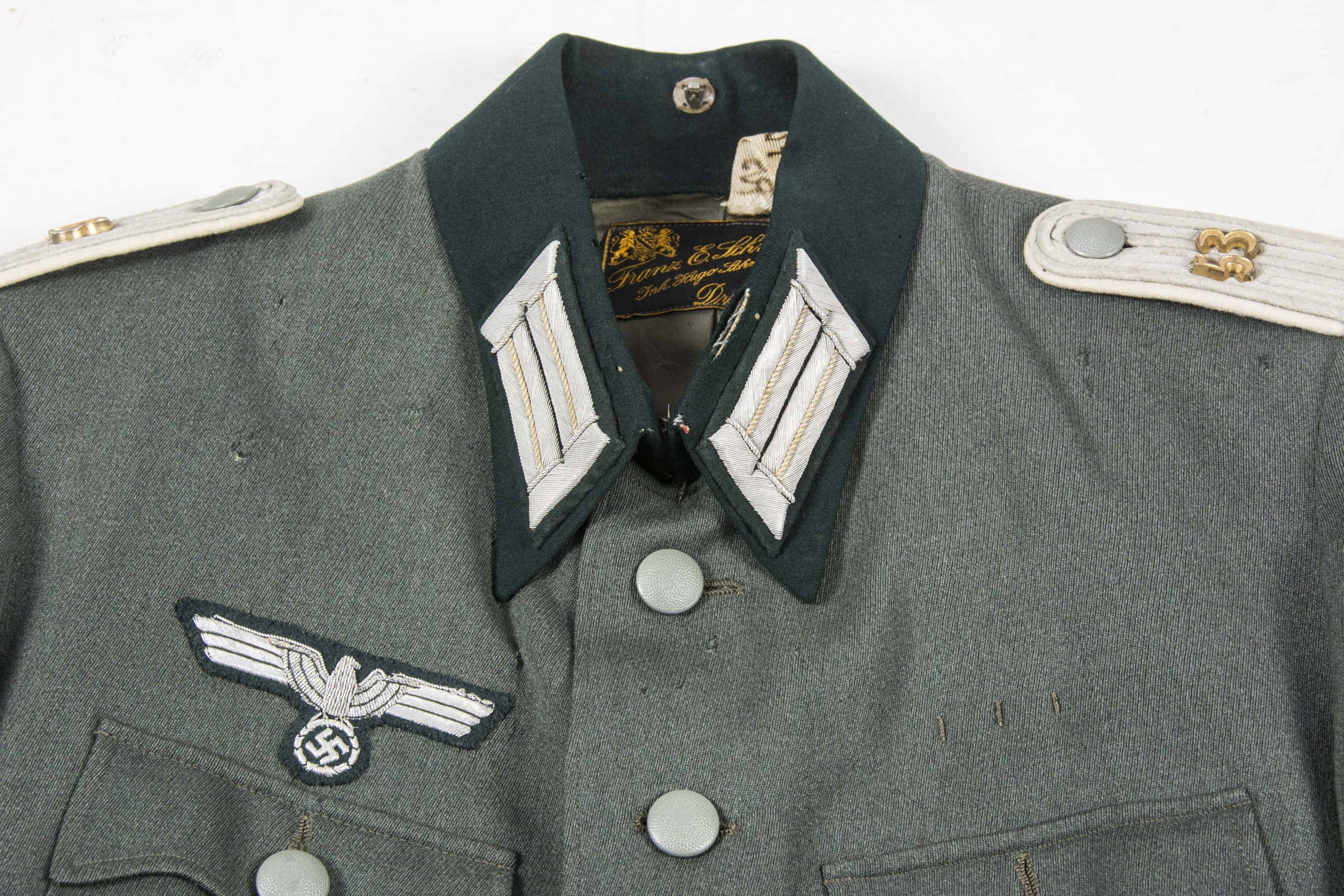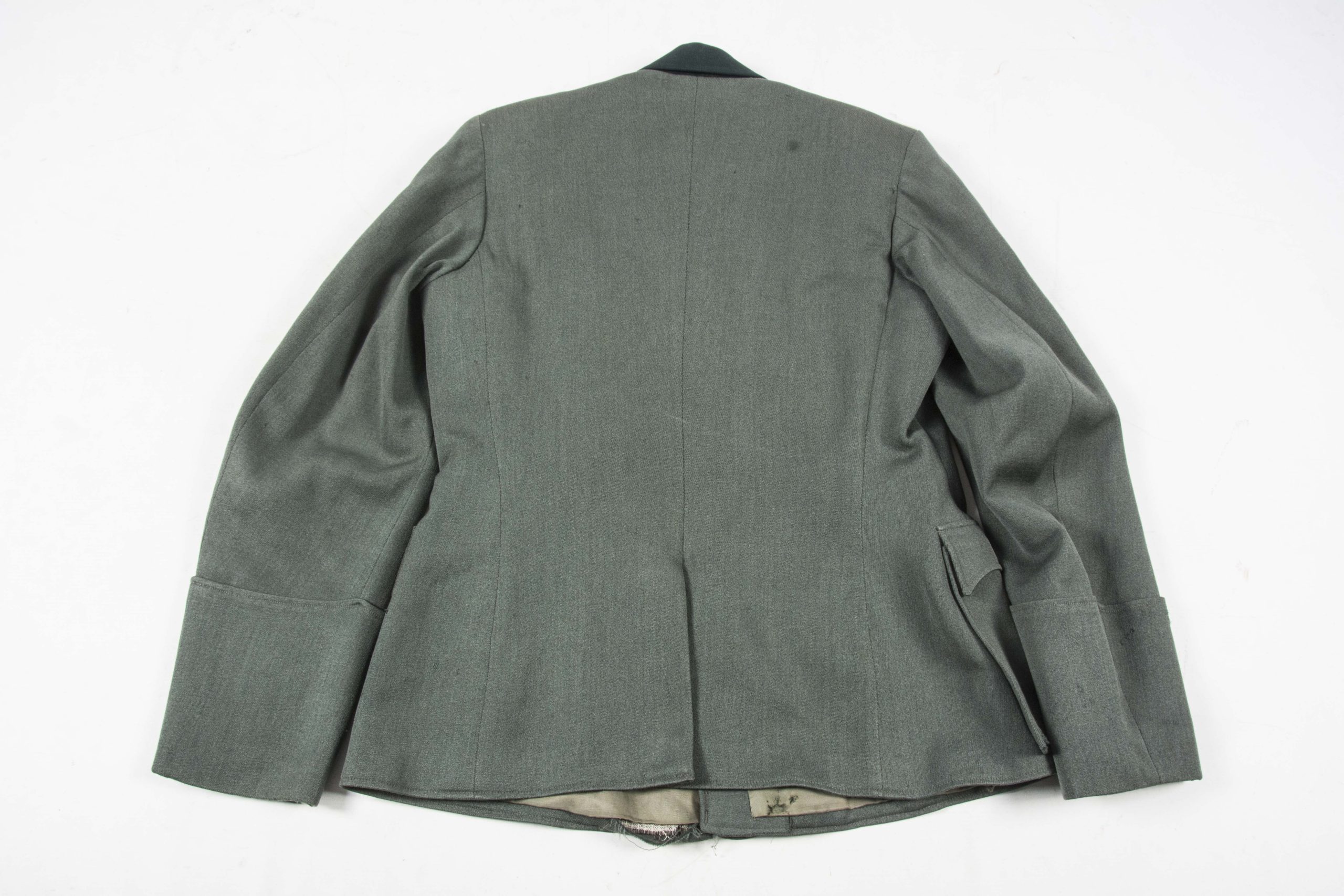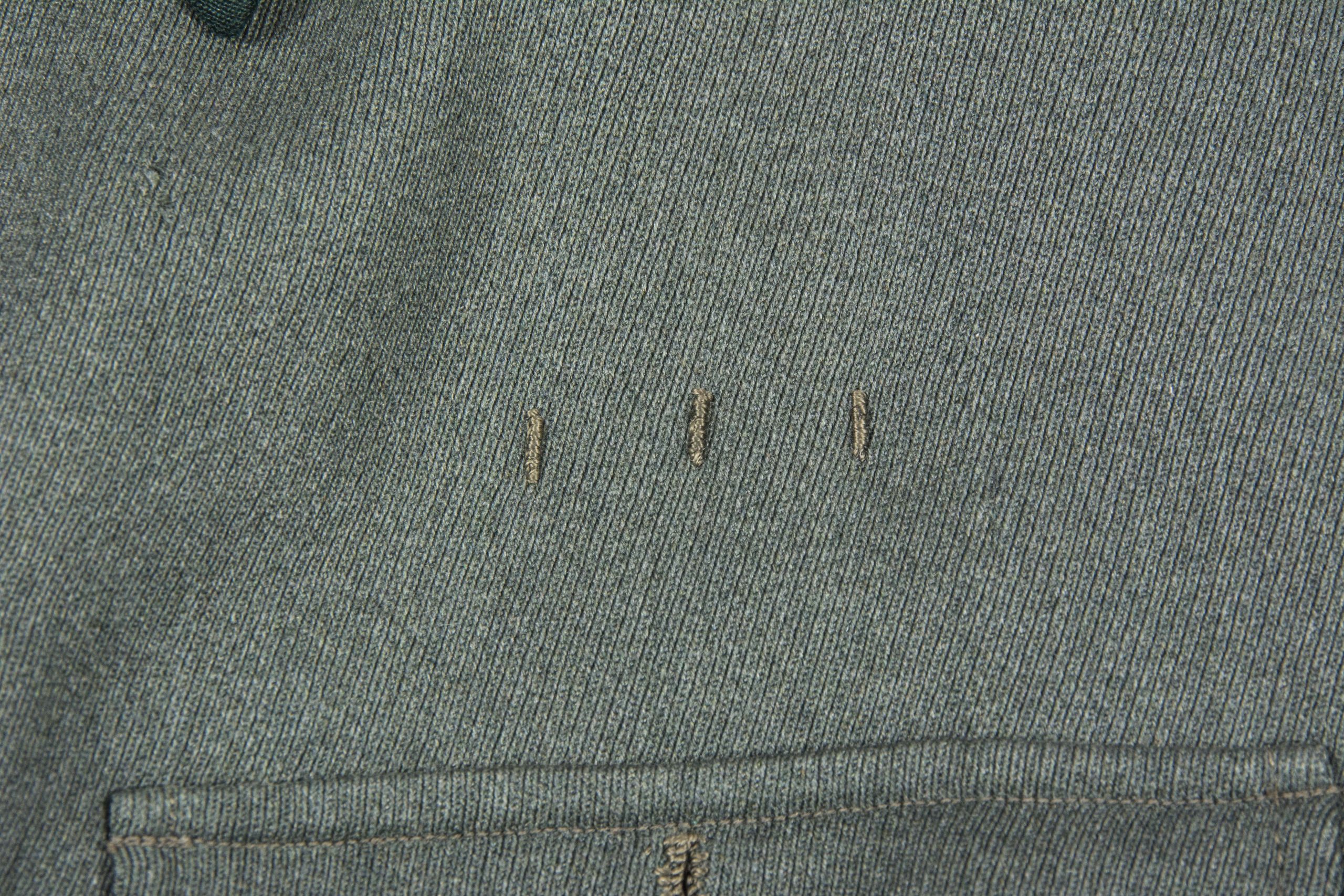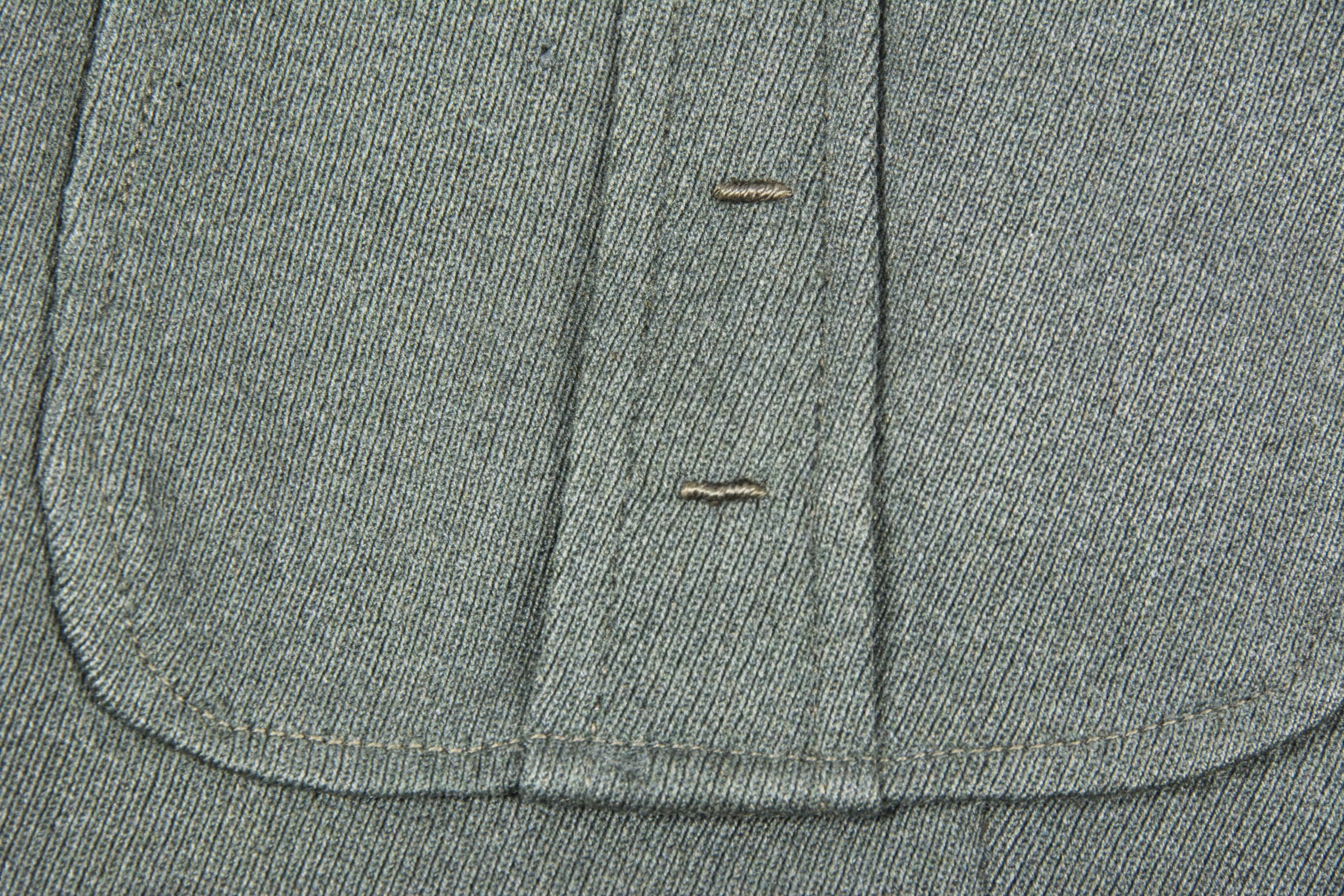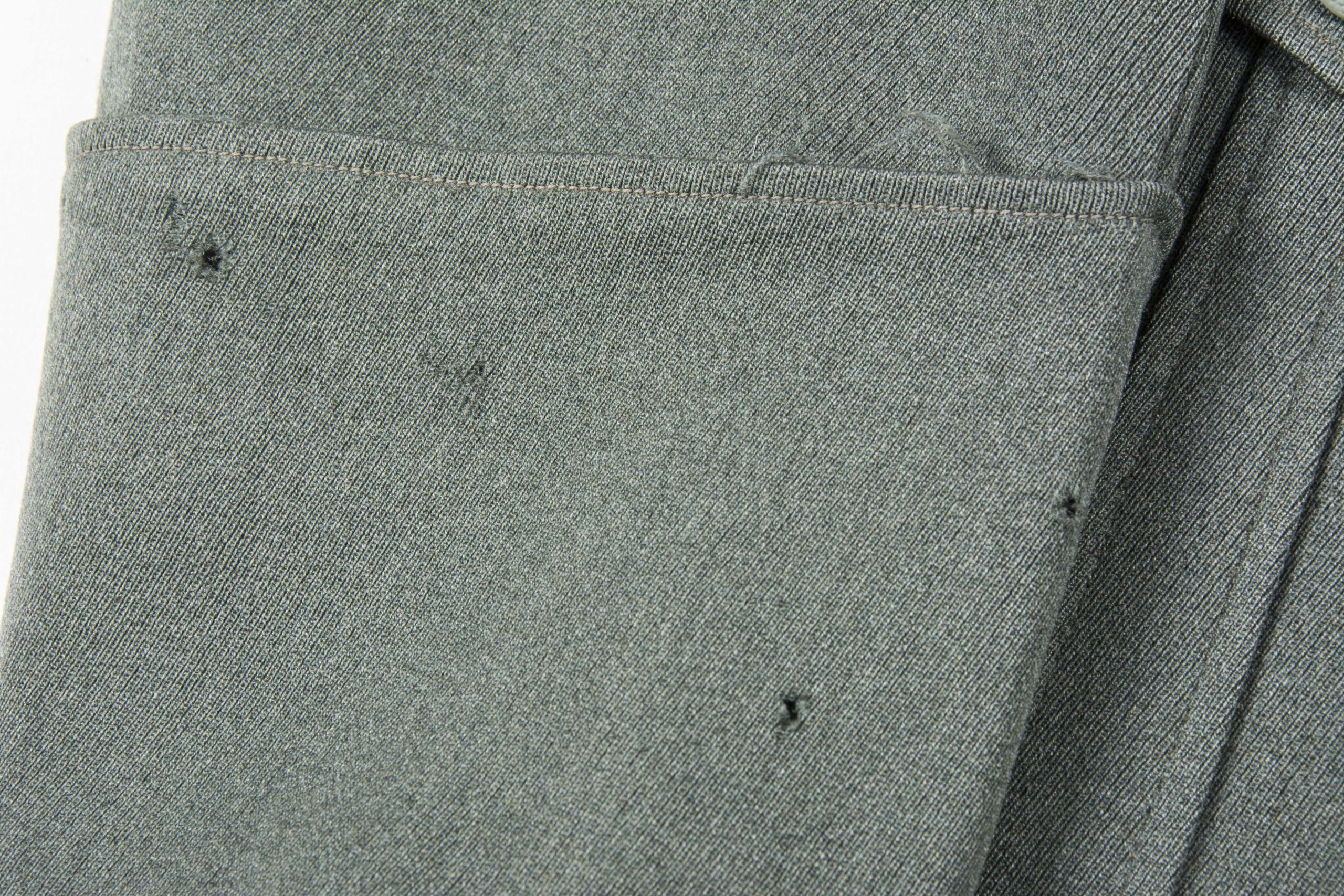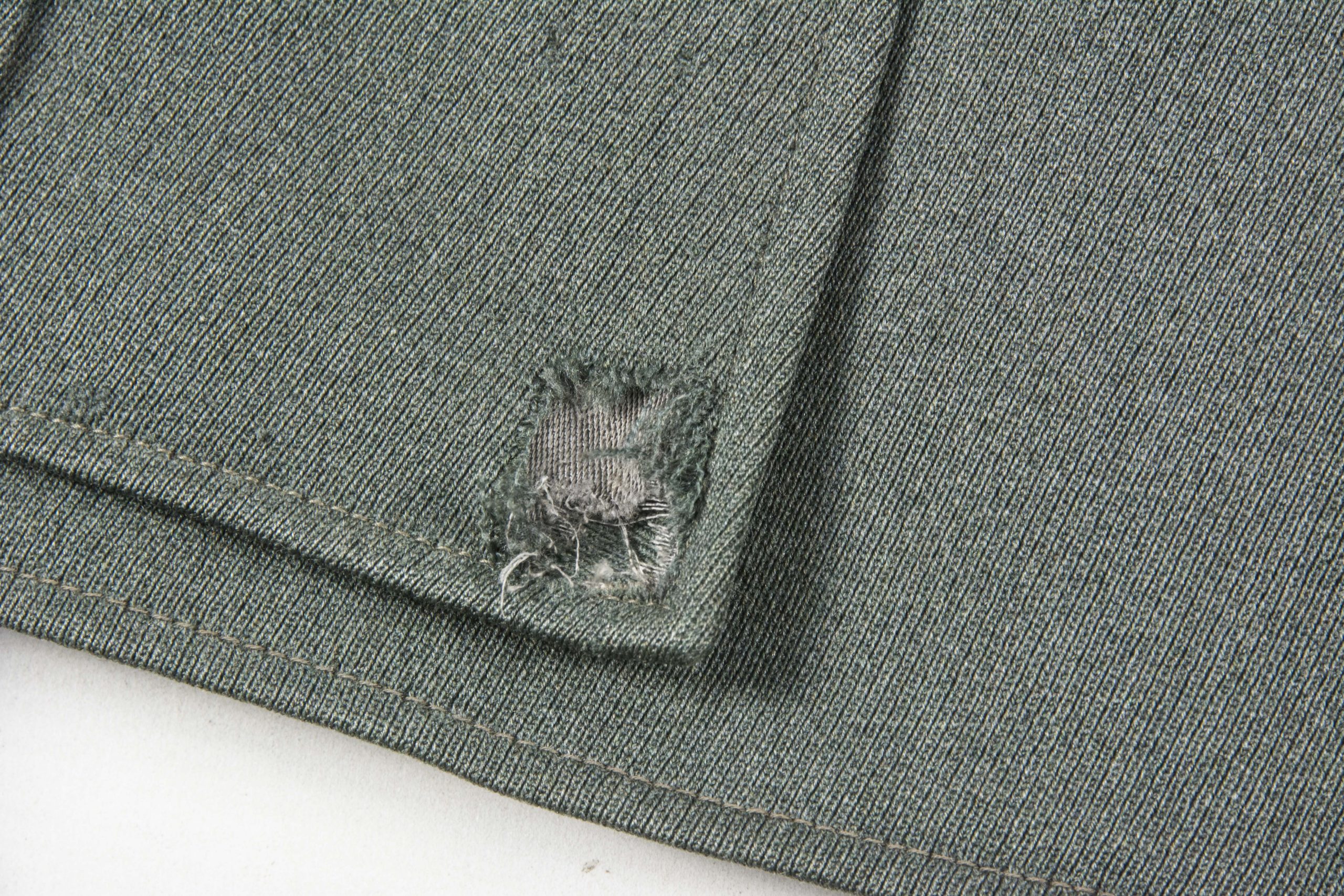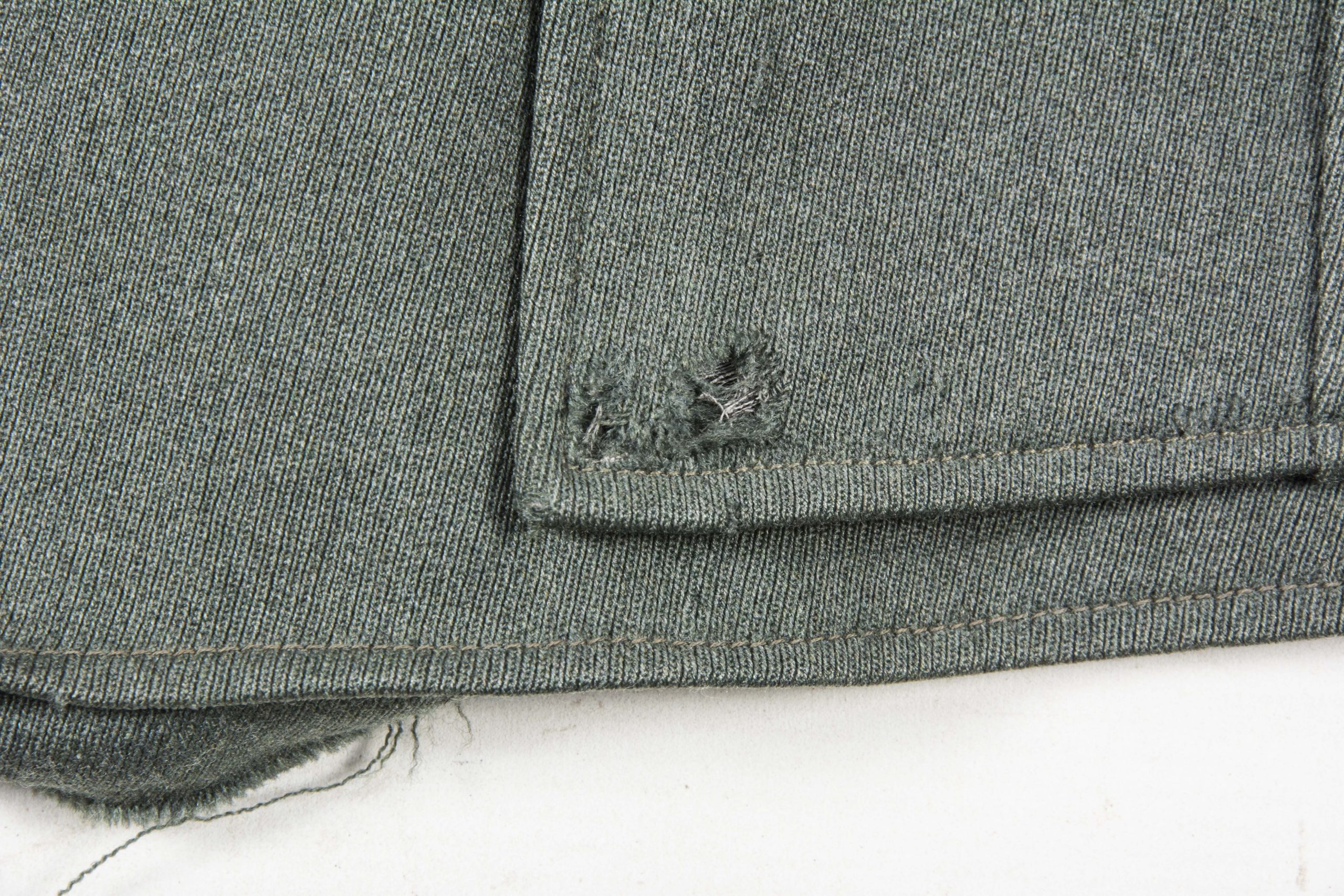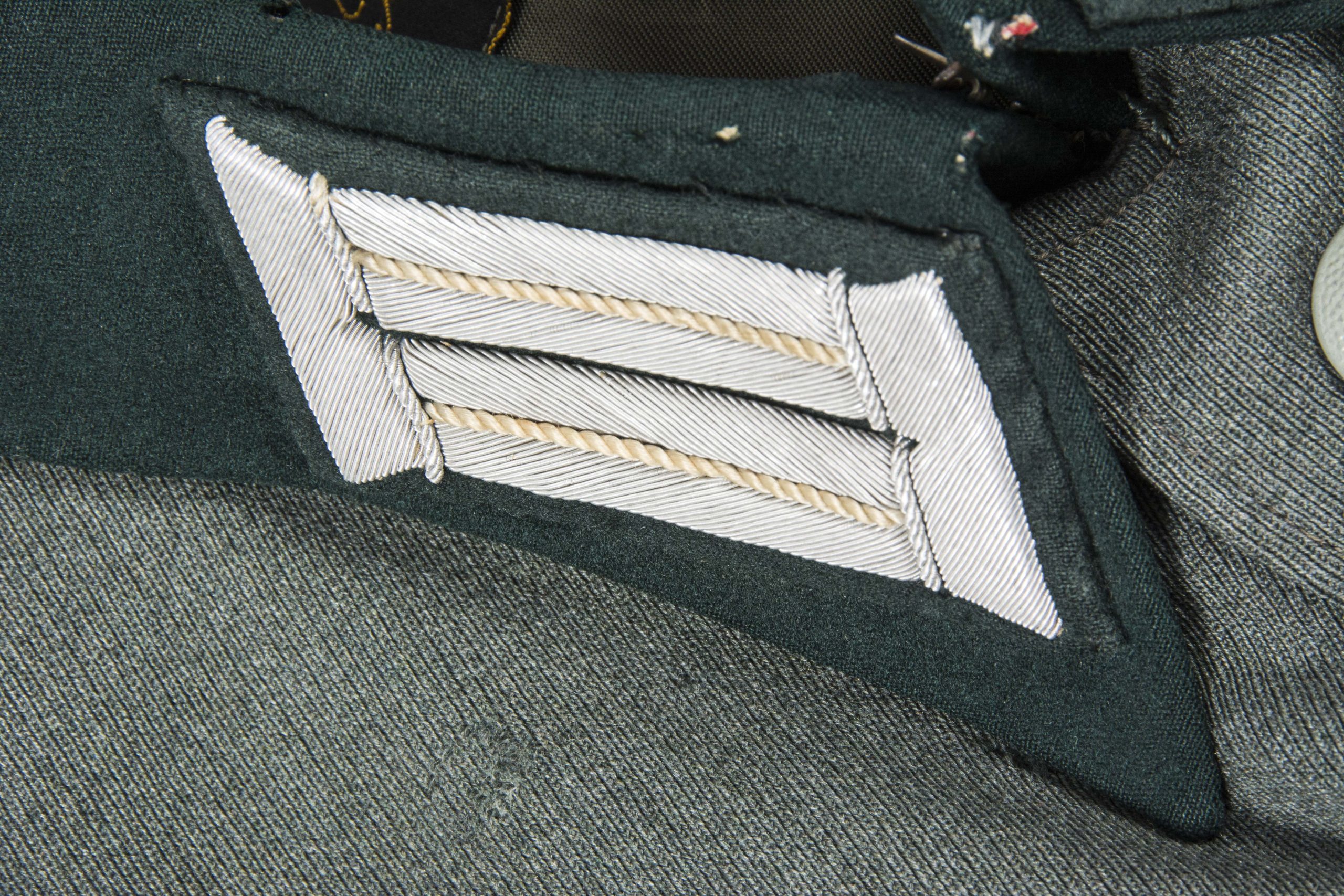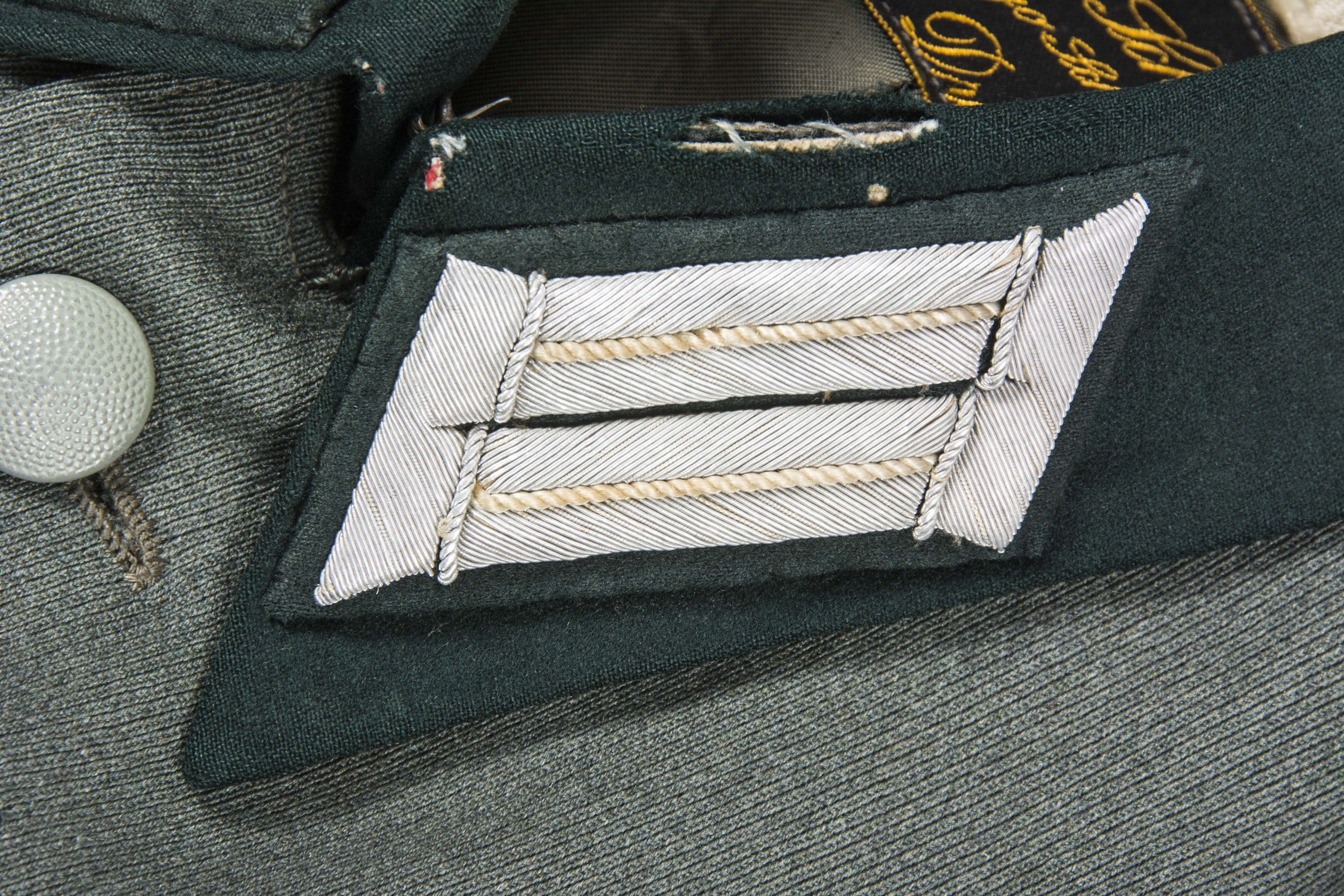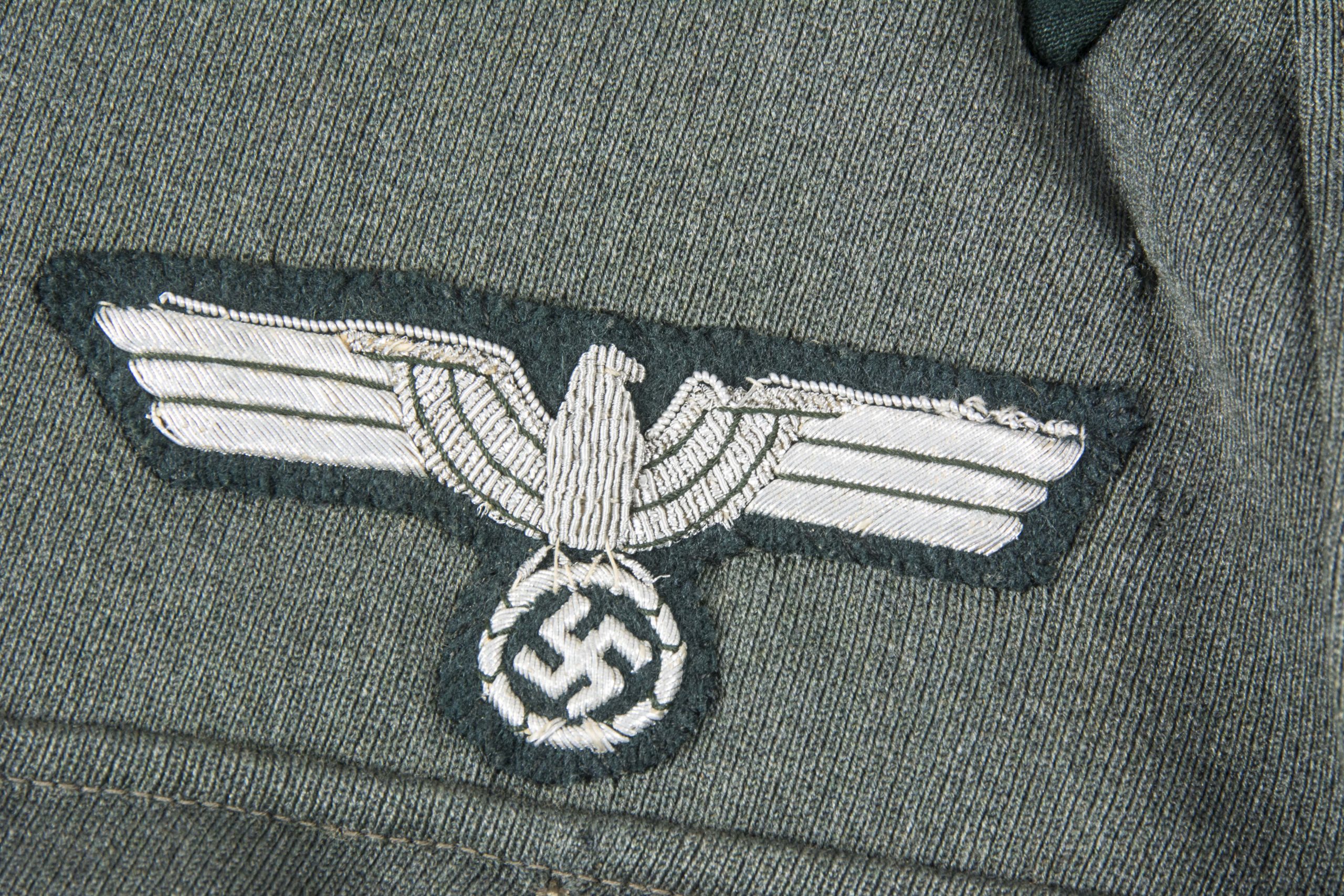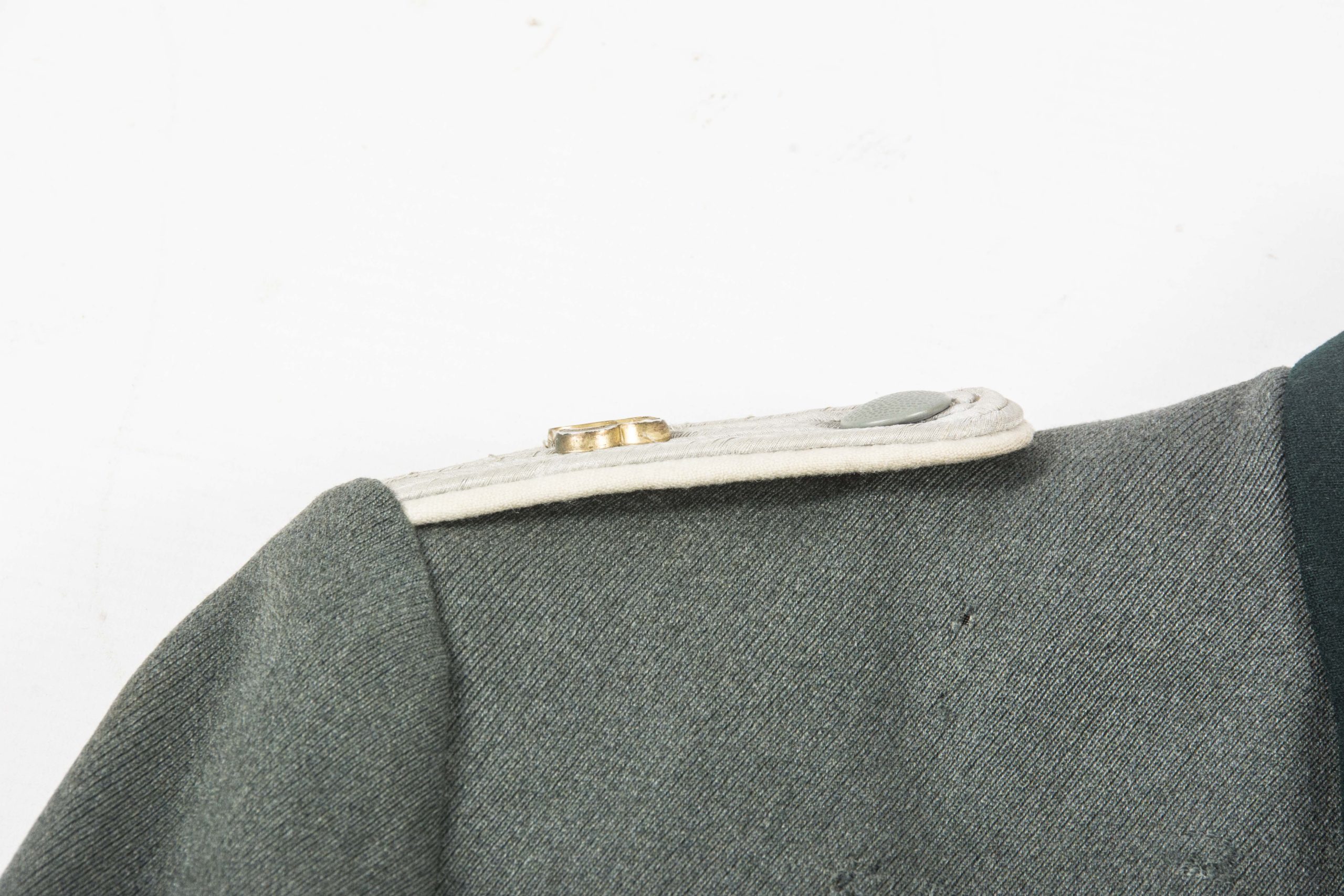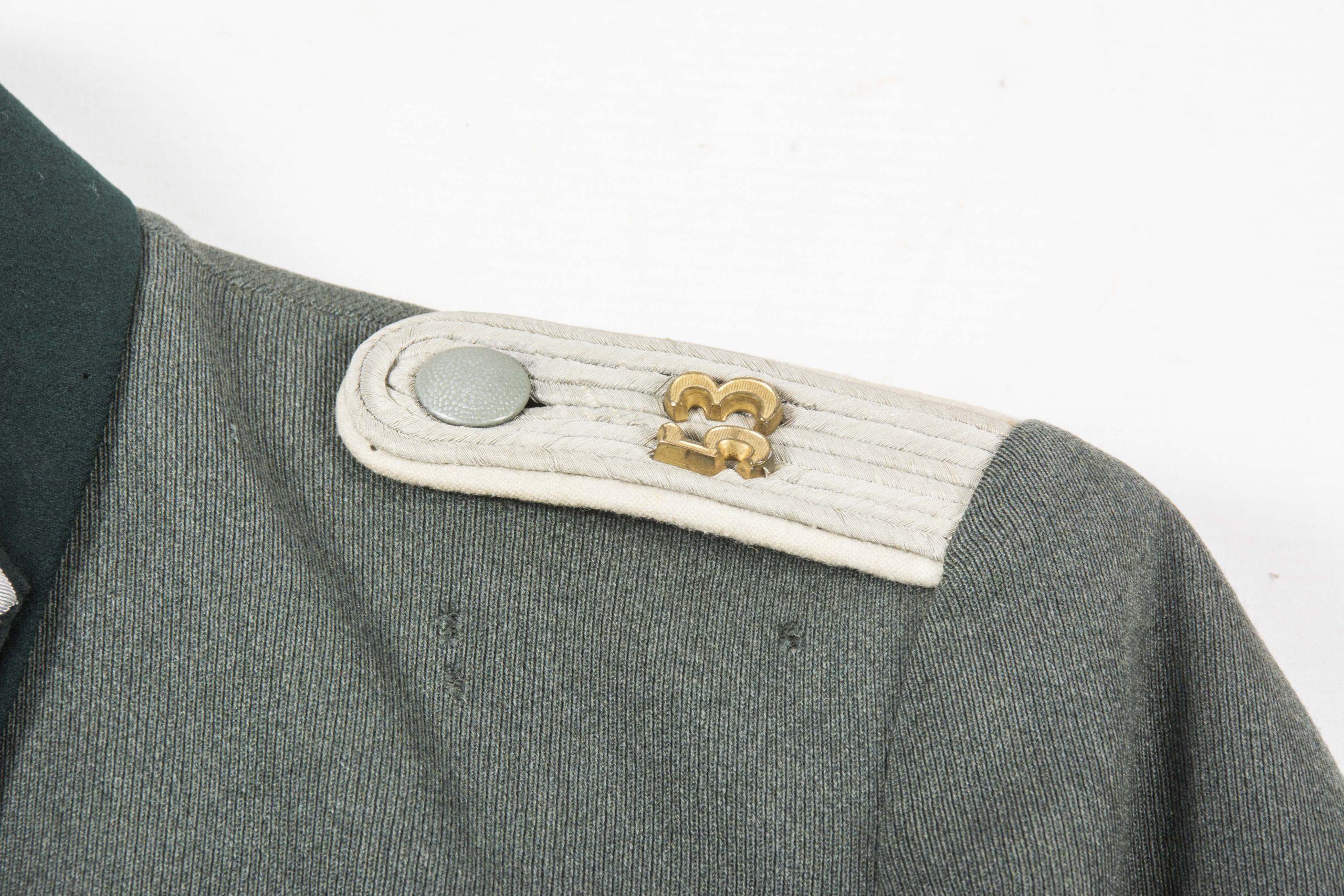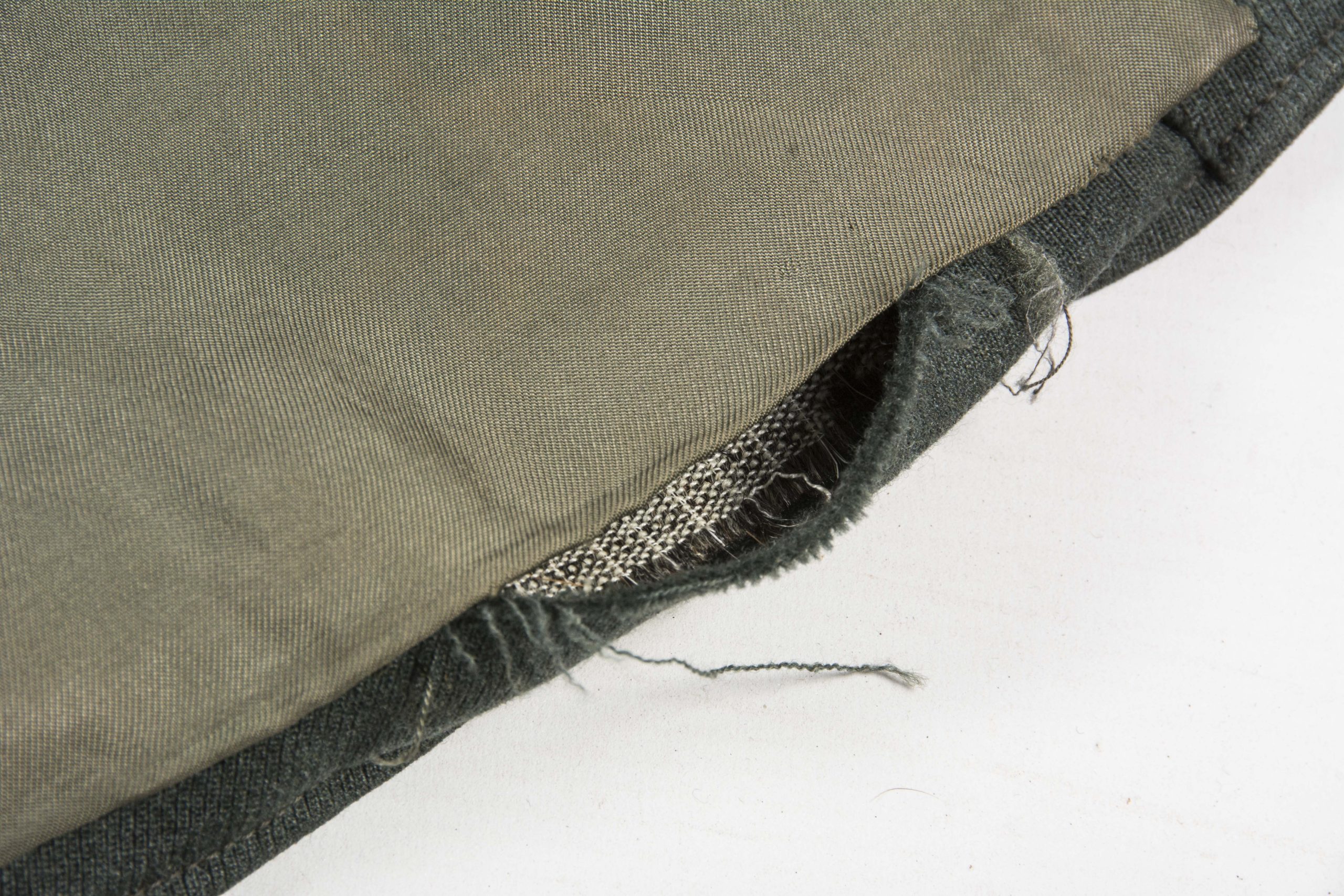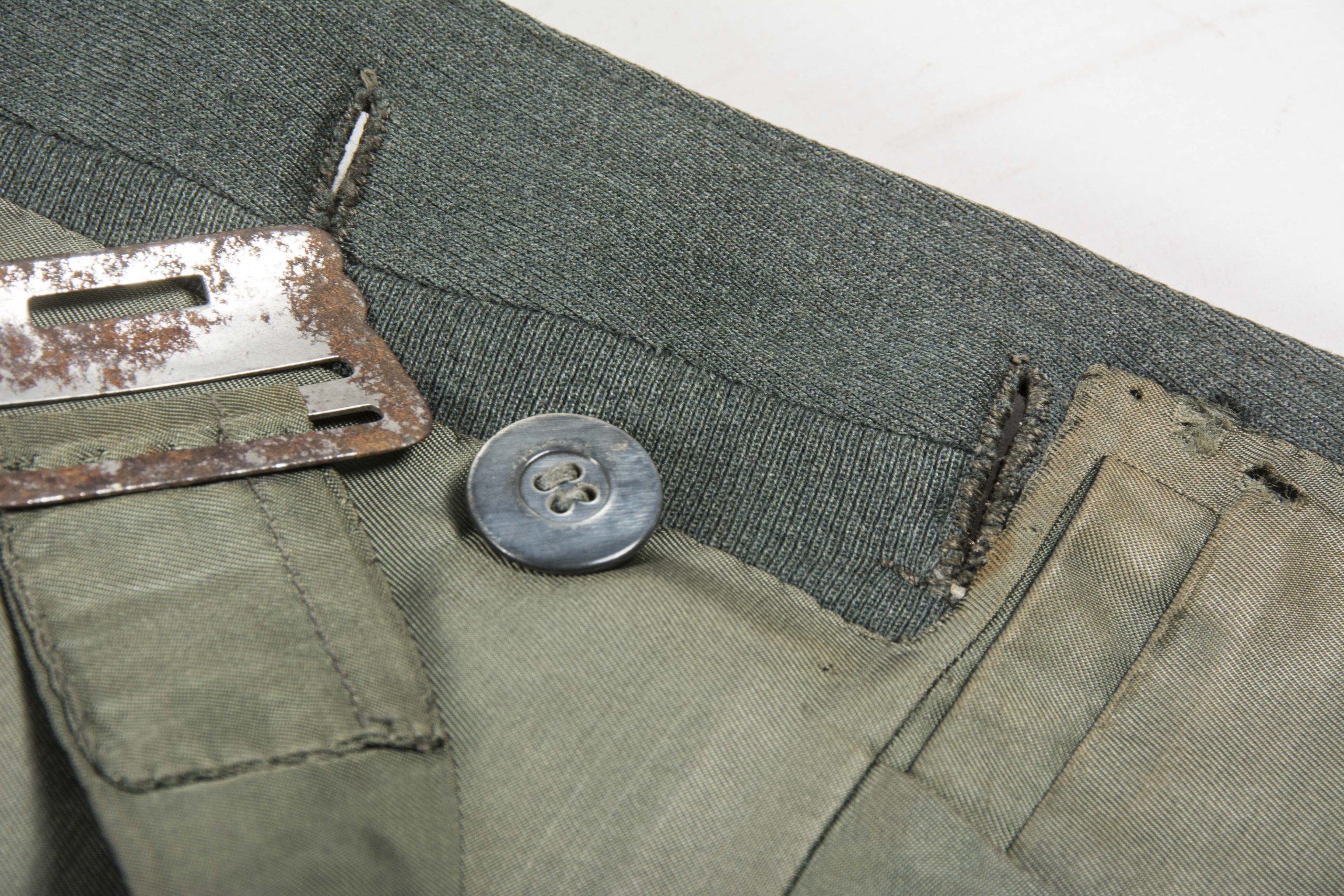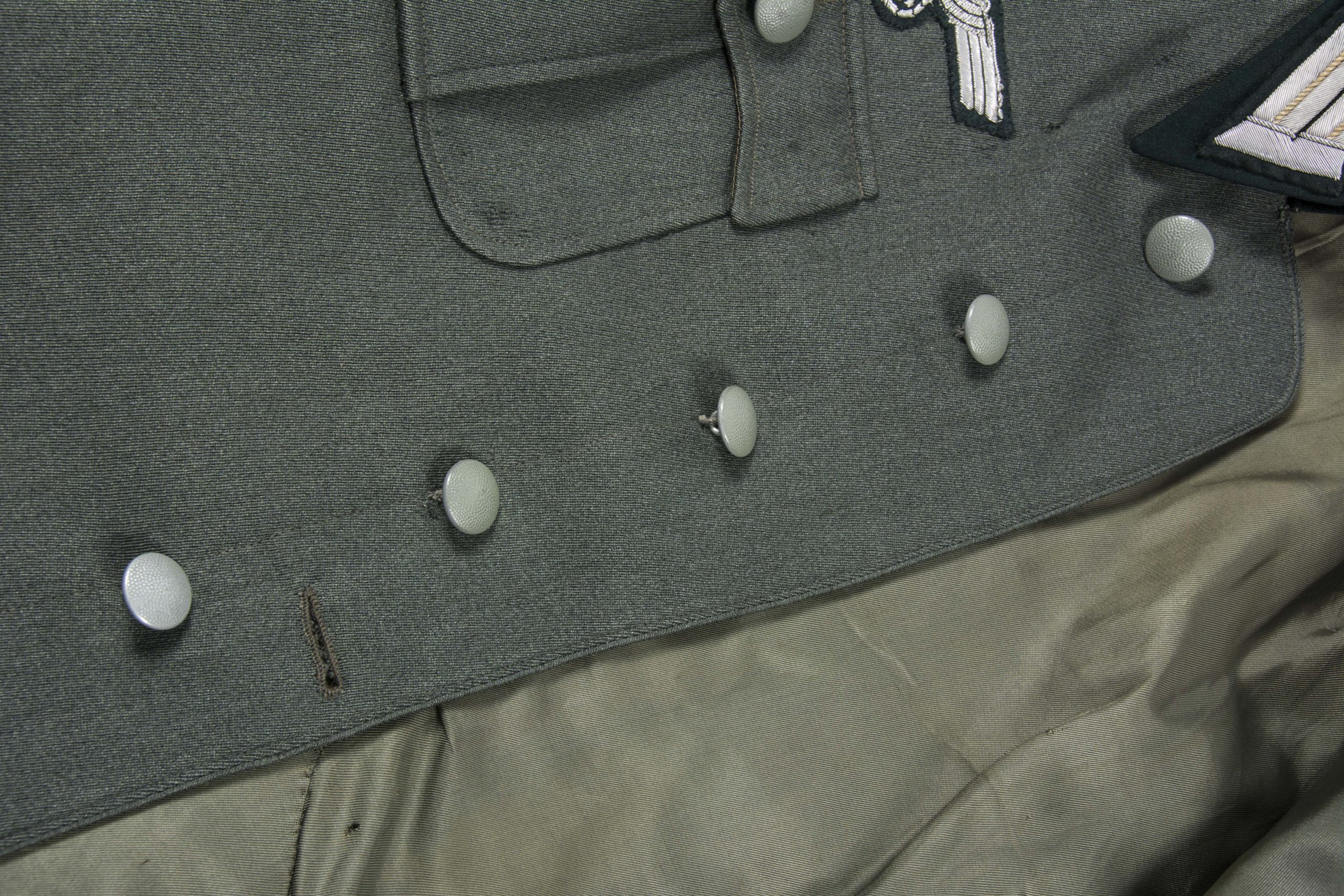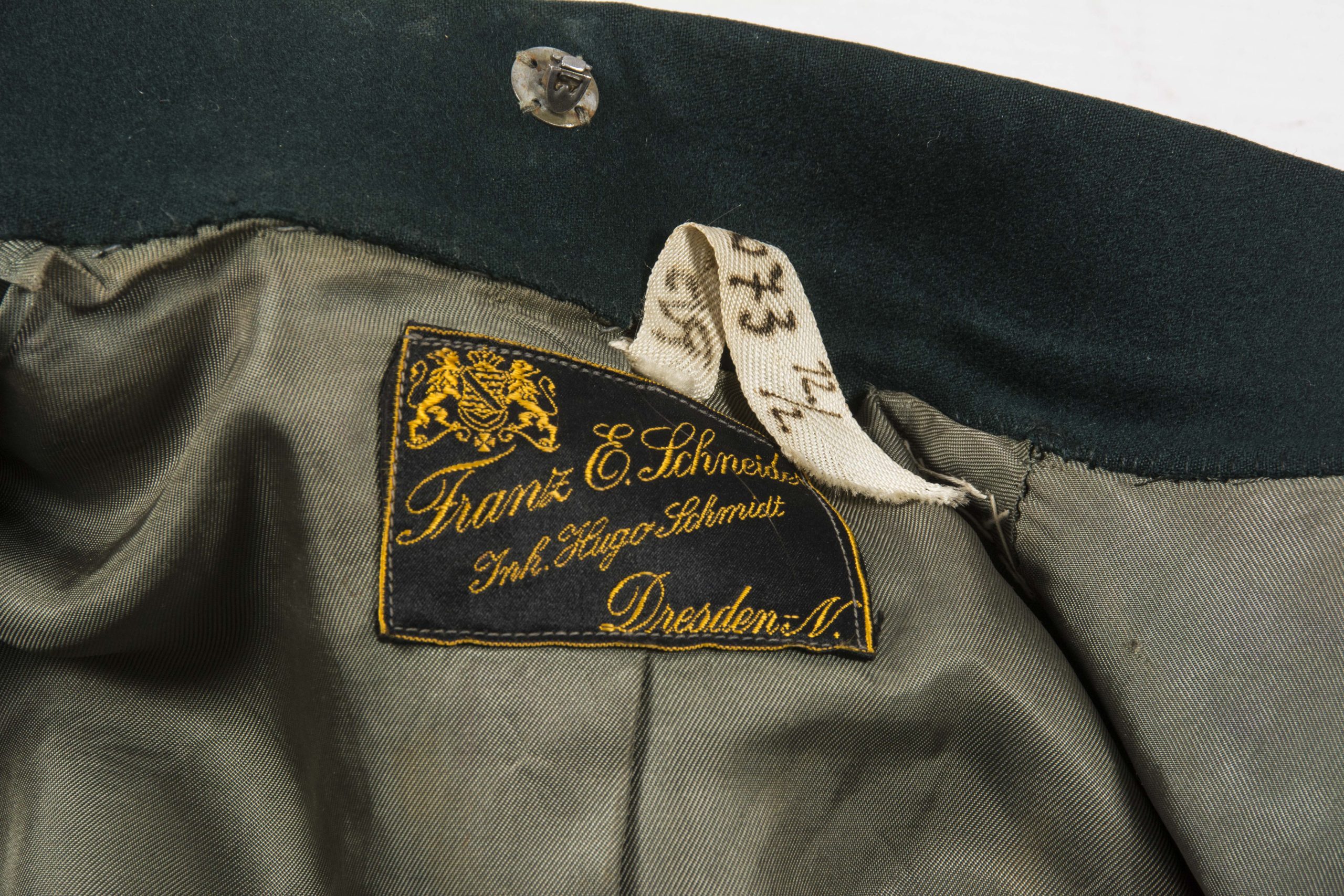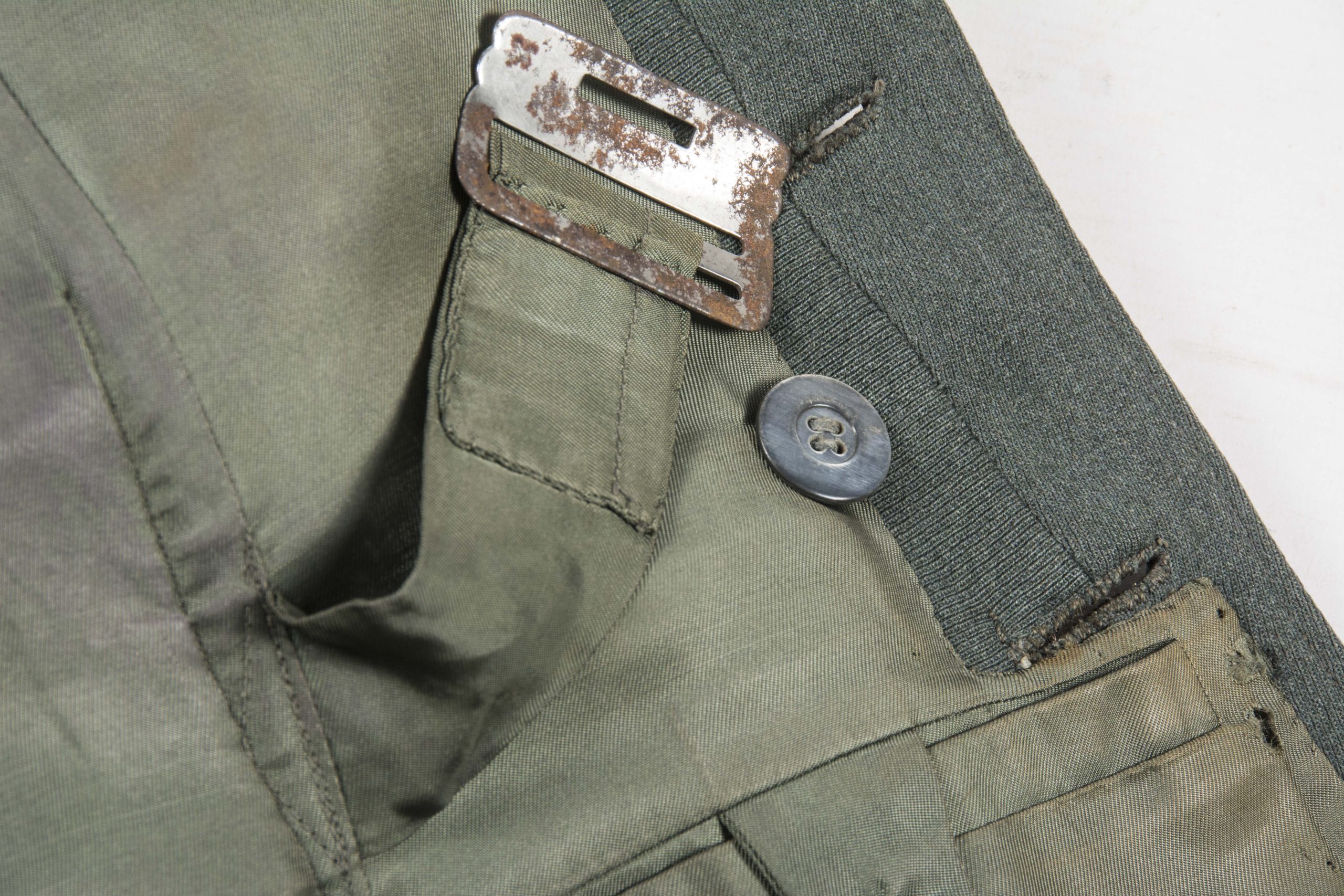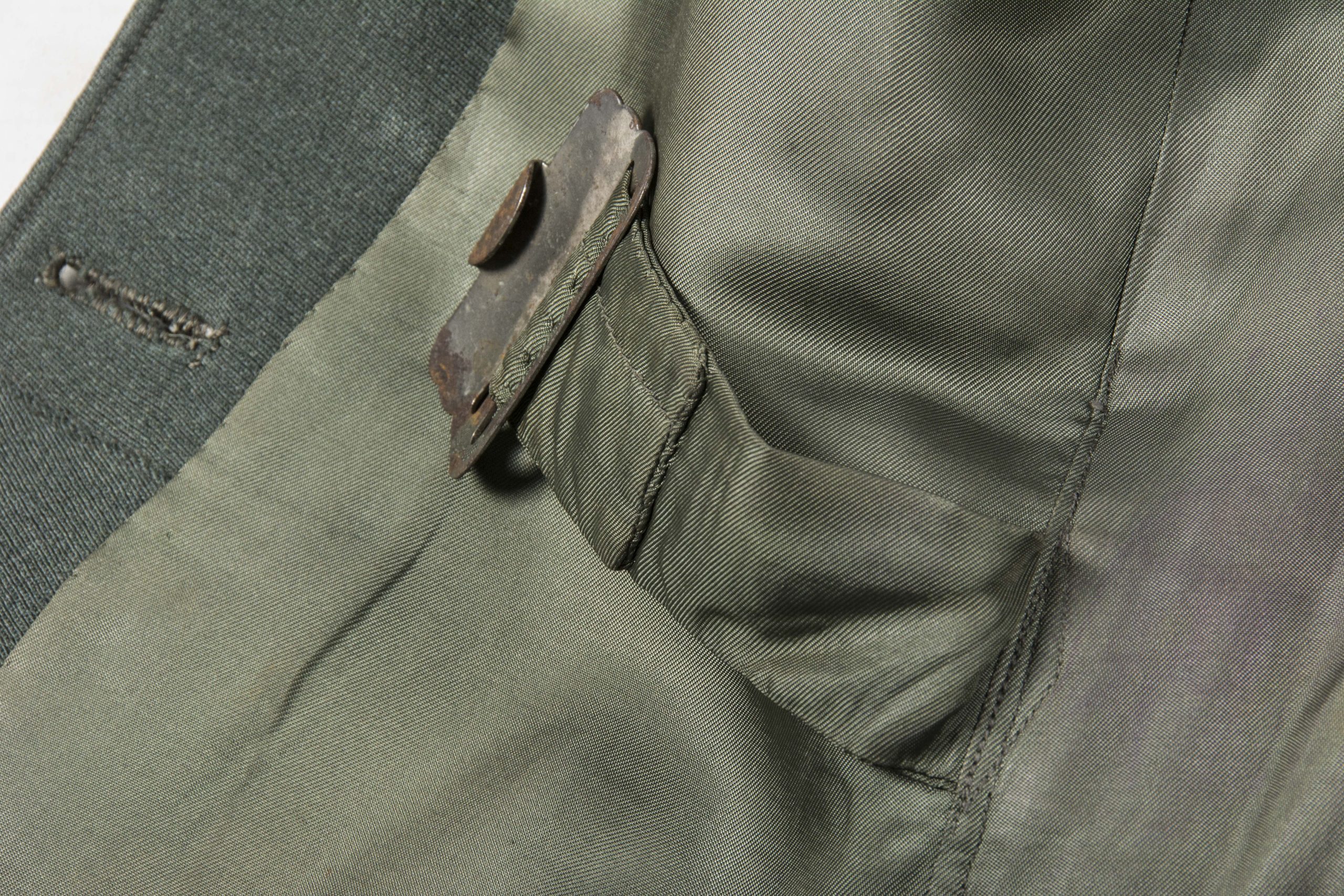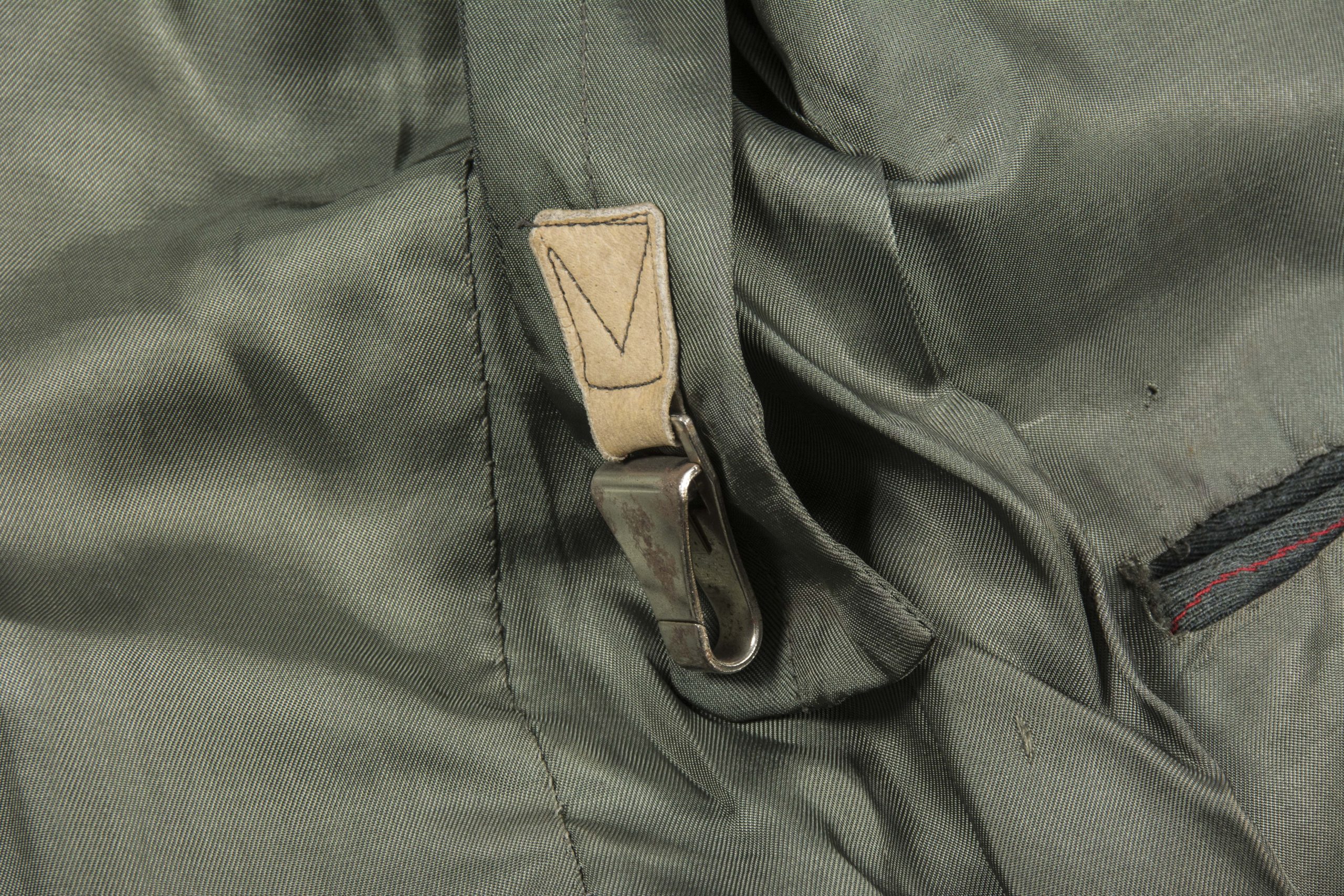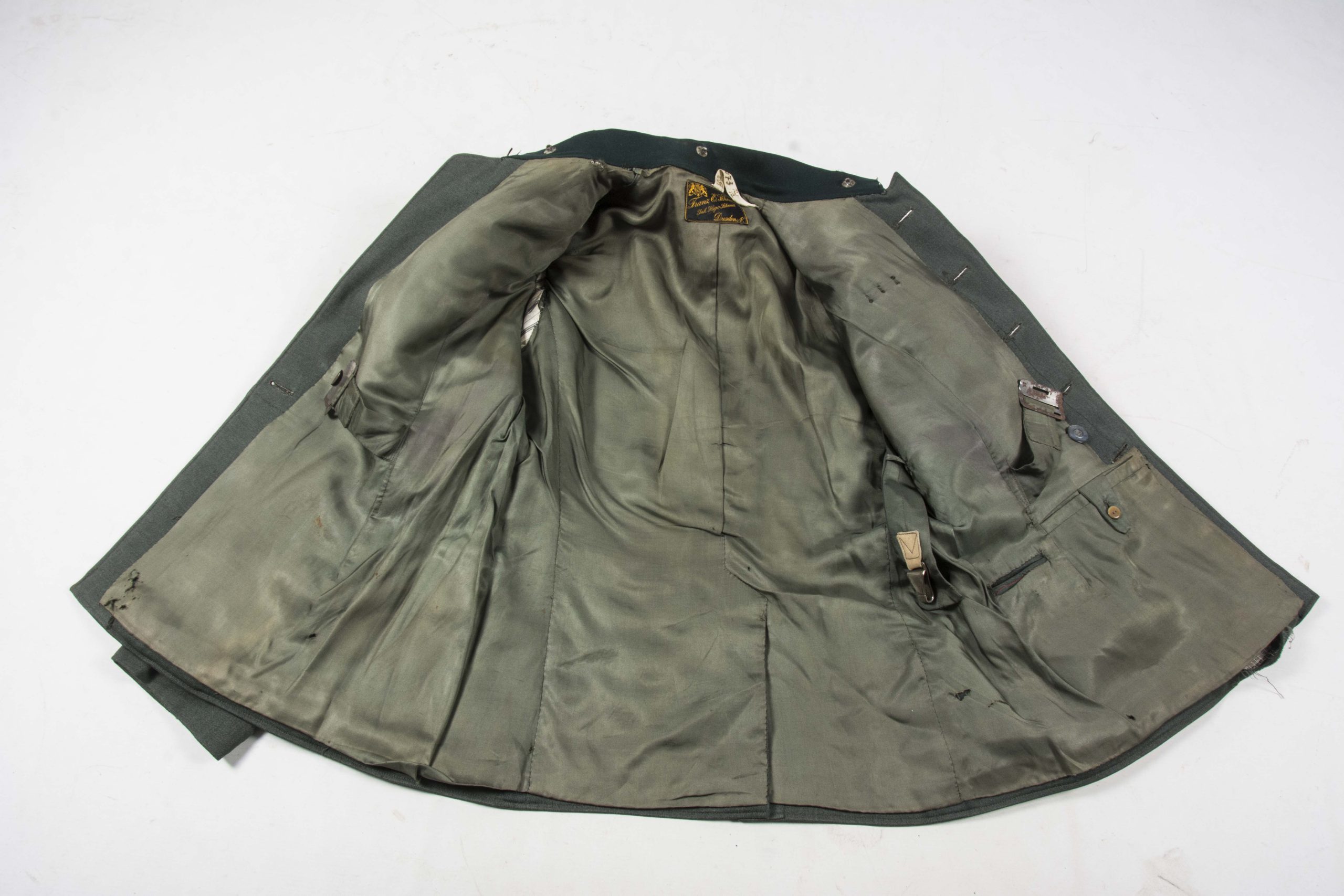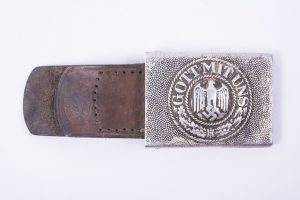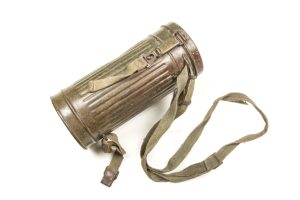Heer M36 service blouse for a Leutnant in Infanterie Regiment 53
€1,850.00
Heer M36 service blouse for a Leutnant in Infanterie Regiment 53. This blouse retains its wartime sewn insignia including a nice set of cyphered shoulderboards for Infanterie Regiment 53. The blouse is a service blouse which shows genuine field wear with damages and wear which are typical yet hard to find! The left breast pocket shows a set of period sewn award loops and a additional set for a Bandspange. This is a killer field worn example for a 1940 campaign display!
Underneath a short unit history of Infanterie Regiment 53 during the 1940 campaign.
9 May 1940; Infanterie Regiment 53 was mobilized early may 1940. On may 1940 it received the order to march westwards in the night. Close to the border it took a pause near Effeld and Rothenbach.
10 May 1940; May 10, 03:00 it received the order to prepare and around 05.35 marched across the border near Vlodrop and stormed the bridge acros the Roer where it exchanged hands undamaged. They went trough St. Odilienberg and Linne. At 8.30 they reached Maasbracht where the Panzerjäger Kompanie attacked the bunkers at the Maas bridge. Around 12:30 the first troops crossed the Maas river where it took many casualties due to Dutch machinegun fire. The advancing troops managed to roll up the enemy troops, cross the canal at Neederwert and capture the bridge in Panheel intact. At around 13:00 the resistance was broken and Wessem was taken. The Dutch-Belgian border at Kessenich was crossed via Thorn by the evening.
11 May 1940; The 1. Bataillon moved in the night trough the hardly passable swamp and forest area south of Kinrooi towards Tengerloo. Using a set of half sunk barges the 1. Btl. crossed the Maas-Scheldt canal. Other bataillons were brought up they used the regimental pioneer platoons rafts to cross it moving most if not all the units vehicles. Around midday the order was given to chase the enemy. They paused in Meeuwen and ended the day after crossing at Helchteren. By nightfall they had covered around 45 kilometers into Belgium resting in Lilo, Helchteren and Zolder.
12 May 1940; the regiment crossed the Albertkanaal which was cleared of Belgian resistance during the night. It received its first air raid in the west. They faced resistance when they reached Lummen which was taken by nightfall at heavy casualties.
13 May 1940; They pushed trough to Tienwinkel and moved into a defensive position at their bridgehead acros the Albertkanaal because the units to its left and right have not yet crossed the canal. Late in the evening it moved westwards again.
14 May 1940; The regiment was pulled from the front for a short pause where they were fed and received new ammunition. Afterwards marched trough Haelen to the staging area at Meensel-Kiesehem and Molembeek-Wersbeek. At 03:30 it moved to Lovenjoul where it arrived int he evening.
15 May 1940; The regiment crossed the Dyle river and took up positions to move towards Leuven. This attach was however called up and dug into defensive positions. They received a heavy artillery barrage from the British troops near Leuven.
17 May 1940; The regiment attacked across the Dyle. After crossing it repaired the blown bridges and the spearhead of the regiment advanced towards Brussels trough Eversberg, Corstenberg, Nosseghem and Zaventem. The regiment encountered hard resistance around Dieghem on the Canal du Nord.
18 May 1940; The regiment fought its way into Brussels trough Haren and Evere. In the evening the unit took positions and went to rest at Bodeghem and Schepdael.
19 May 1940; The regiment advanced to the Dendre canal. Around Ninove it encountered a British artillery barrage. The canal was heavily defended and around mid day the 5. Kompanie was the first to cross the canal. Around 17:00 the rest of the regiment had crossed.
20 May 1940; Marching trough the night the regiment reached Renaix(Ronse) and attacked towars the Schelde. Under heavy enemy fire it however stays pinned at their side of the river.
23 May 1940; The regiment attacked the crossing and secured the bridgehead
24 May 1940; The regiment crossed the river en masse moving to Vichte where it took rest.
25 May 1940; The regiment received the order to move into a wide defensive position. Enemy positions on the hills north of Heule and Galleghem were attacked and moved into.
26 May 1940; The regiment marched West
27 May 1940; The regiment marched in line with the spearhead of the unit towards Paschendaele were it attacked together with Infanterie Regiment 11.
29 may 1940; The regiment attacked and took Boesinghe.
30 May 1940; The regiment moved towards Dunkirk. After a quick march the regiment reached Elzendamme were a destroyed bridge was repaired by the Pionierzug. Trough Hoogstade and Stavele it moved towards Wegscheede. At Hondschoote it encountered a heavy artillery barrage and resistance. The spearhead of the unit managed to cross the Basse-Colm canal and disperse the enemy from the eastern bridgehead.
31 May 1940; The regiment was supposed to cross the canal which was however delayed trough the fields being flooded by the British. Towards the night the artillery was brought up and a Bridgehead across the canal was made.
1 June 1940; The regiment crossed the Digue canal at St. Michel. Where it stayed until June 3rd.
3 June 1940; The 9. Kompanie retreated due to their positions being flooded.
4 June 1940; The regiment moved into Dunkirk which ended the first battle of France.
After being deployed again for the Battle of France, the regiment fought at Henin-Literd, Moy, Nesle, Beauvais, Suznay, Surville, Maison Baugis, Chartres, Briarres and Augerville until the armistice in Larchant. It suffered 471 casualties of which 140 men killed.
15 October 1940; The regiment was renamed into Grenadier Regiment 53 and was moved to the 14. Infanterie Division.
July 1944; the unit was renamed to Verstärktes Grenadier-Regiment 1065 under the 14. Infanterie Division where it stayed on the eastern front until the end of the war.
In stock



